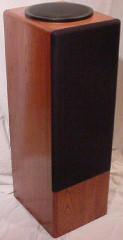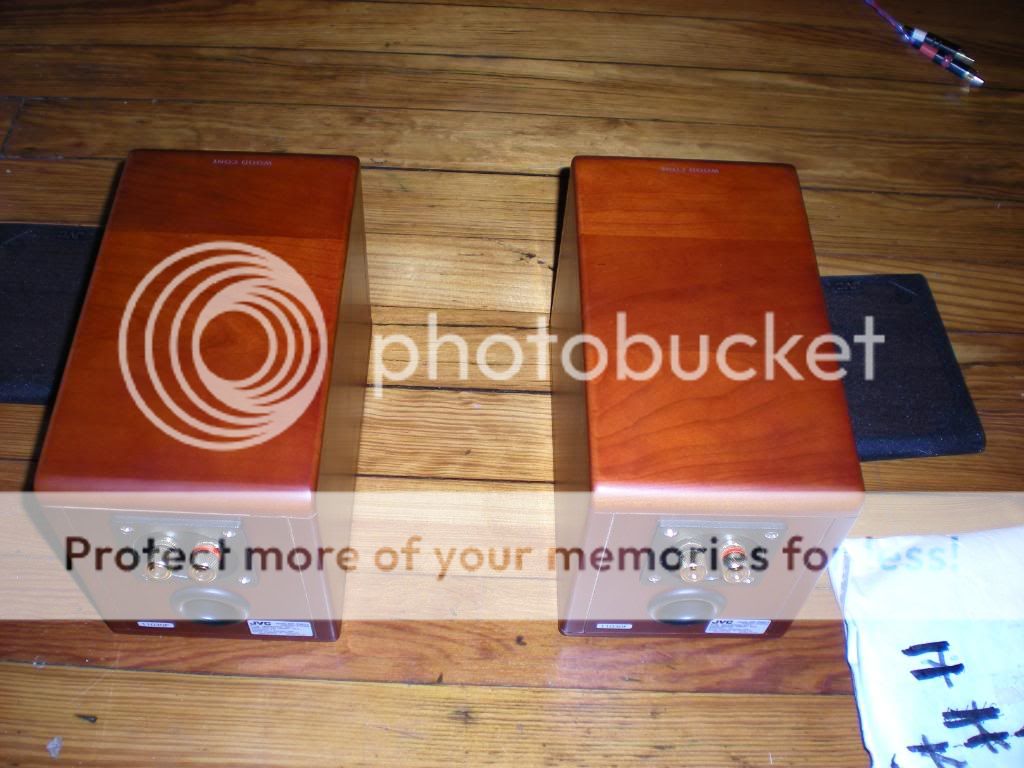Not yet. I will be doing our pair & likely Jeff's pair.
dave
Would be interesting to know how they turn out...
Maybe 1 pair at a time, so the other can server as a reference (of sorts)?
Last edited:
For you. You have been quite vocal about your dislike. Many more people have found it well to their liking (much like my dislike of the JX92 is balanced by many more people finding it nice). I'm listening to a set now, and don't find them objectionable, althou i do prefer A7x and EL70 in the same size range.
There are FRs capable of near 9 octaves, with limits to loudness & dynamics (the guys on the back deck listening to DSOTM on Sat nite at diyFEST 2 WEs ago might have something to say about those limits being smaller than expected)
dave
9 octave? If real that would qualify. Have not found one yet. 200L cabinets are not real. 30 foot horns are not real. Trading cone breakup for whizzer breakup is not real.
Most unfortunate, much of the population has pretty substantial hearing loss. This could be at the root of some folks preference. The midrange of the 125 is very flat and well behaved. It just does not go any higher than several good 7's so I just cant see an advantage.
Maybe it is a definition problem. If a driver has proper balance where the lack of top matches the lack of bottom, so it would be suitable for a table radio, is that the target for a full range? Building the best table radio is a very worthwhile effort.
So, I'll keep watching. If it wasn't for that darn physics. We need lighter stiffer cones and much lighter voice coils. We need more complex cone shapes to manage resonances better. Damping from the surround needs to be augmented at the spider. Beaming is still an issue. Walsh?
9 octave? If real that would qualify. Have not found one yet. 200L cabinets are not real. 30 foot horns are not real. Trading cone breakup for whizzer breakup is not real.
These get into the 40s, reach up to 20k and there are cabs that go lower for the same driver. Alpair 10.2 is capable of even a bit lower -- the price is efficiency. Few multiways actually reach down this far, and certainly not for more $$.
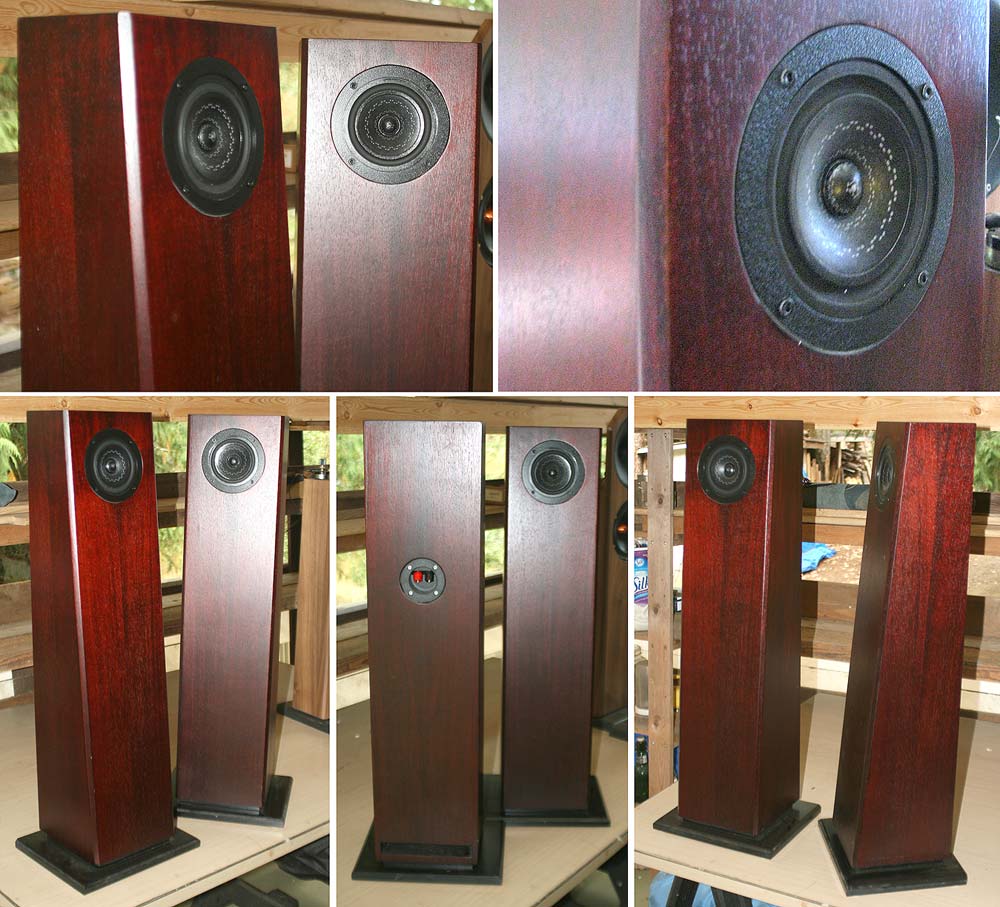
dave
With all due respect Dave, even their spec sheet shows plus and minus 10 dB 100 to 10K. I love their "vocal shout reduction" as how they describe the massive dip in the midrange and "built in baffle step reduction" Great ad copy, I'll give them credit for that!
This may be a great little driver; It may be the tops in small wide range, but I still have to call you out a little. It is just a 4 inch driver. It looks WAY better than the Foxtex, but requires a box a lot larger than I can easily use. I would like to hear them, either stock or yours. A bit expensive for a throw away test though. I'll play with the box models a bit. If I can find an excuse, it may make a fine center or surround.
This may be a great little driver; It may be the tops in small wide range, but I still have to call you out a little. It is just a 4 inch driver. It looks WAY better than the Foxtex, but requires a box a lot larger than I can easily use. I would like to hear them, either stock or yours. A bit expensive for a throw away test though. I'll play with the box models a bit. If I can find an excuse, it may make a fine center or surround.
10L sealed looks viable. 16L ported is within reason. The eq may be quite a network. It does look like it could be a viable midrange for a crossover at 5K or so. Something completely out of the equation with lesser drivers. Actually a pair of them sealed as MTM may even push enough air for moderate listening. Kind of expensive for a plastic frame and no copper shorting ring. Does anyone have any distortion or CSL plots?
I flat don't believe the 30 degree off axis plots. Guess I'll have to build some.
Non, how close is this to what you are looking for?
I flat don't believe the 30 degree off axis plots. Guess I'll have to build some.
Non, how close is this to what you are looking for?
ah, the shortcoming of the single driver 'ideal'. MA seems to do OK in keeping Mms down, im guessing the small VC diameter helps, or the former material. Audax did 'formerless' VC for tweeters, maybe a fullrange manufacturer will try it one day.
Former-less is not really true if you consider all the glue and sometimes fabric that supports the coil. I suspect the extra cost to have to heat cure the glue and what it takes to keep dimensional tolerance is a bigger problem that a little light paper tube. It is also handy to have the former when some idiot exceeds Xmax and the coil goes way past the gap or tries to exit via the end plate. Not tweeter problems, usually.
Good idea, but bigger gains elsewhere? What would the same cost do if applied to a bigger magnet? Eddy shorting ring? Aluminum wire?
30 foot horns are not real.
But 35 foot horns are.
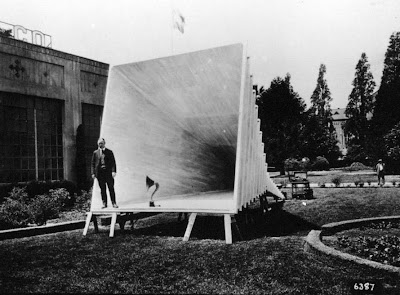
A Magnavox 35ft horn with a 12 foot square opening. I'll take two please.
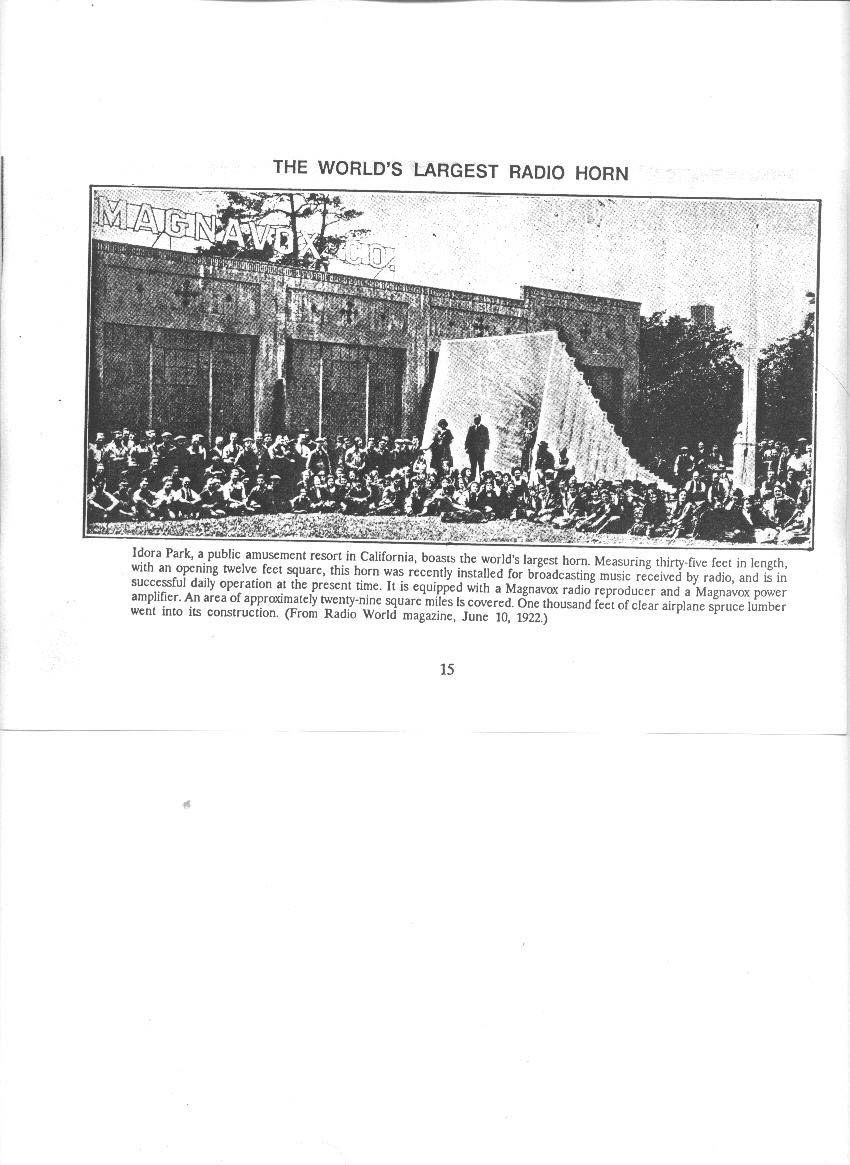
Last edited:
At least Common Sense has a lot of examples of NOT building a brown or black square box. I like the fish.
If the MA is as good as Dave says, and not like the OEM plots, It might be a viable candidate for a ribbon tweeter, or at least to see if a first order crossover has any use at all.
PS: "Real", as in realistic. Yes, I know, Berwin's basement. Totally irrelevant for normal people.
If the MA is as good as Dave says, and not like the OEM plots, It might be a viable candidate for a ribbon tweeter, or at least to see if a first order crossover has any use at all.
PS: "Real", as in realistic. Yes, I know, Berwin's basement. Totally irrelevant for normal people.
So, where can one hear a Lowther or Audio Nirvana? Never seen either in a store. Seen plenty of speakers expensive enough to have $1200 worth of drivers in them, but never a full range.
And you probably never will. You best bet is to go to an audio show. But then again, the rooms are usually so dreadfully bad that you have no idea what the speakers really sound like.
Bob
I'm going to try the MA Alpair 12P. It looks amazing on paper. It's more of a 7" than an 8" though.
With such a high xmax for a fullrange unit, you can simply use EQ for bass extension.
6 1/2in, as Dave mentions.
You need to be careful with that, even with a driver with a relatively high Xmax. OK in small rooms on undemanding material, in larger spaces on material with greater LF dynamic range, distortion will quickly start to rise. I'd leave Linkwitz transform etc. for arrays & subs.
6 1/2in, as Dave mentions.
You need to be careful with that, even with a driver with a relatively high Xmax. OK in small rooms on undemanding material, in larger spaces on material with greater LF dynamic range, distortion will quickly start to rise. I'd leave Linkwitz transform etc. for arrays & subs.
Thanks for the heads up. Yes it is in a small room, my bedroom. I want to make small bookshelves with the Alpair 12P. I will be powering it with a low power tube amp, hence my interest in this 92 dB/W fullrange unit. To minimize box size I will try small sealed or ported with Linkwitz transform.
200L cabinets are not real.
Really? Why? Tell that to Altec, or anybody who is using a drive unit or drive units that require a 200 litre Vb. Or more. Sometimes substantially more. I'm not entirely certain by what definition these 'are not real.' Or are you saying that a drive unit or drive units that require a 200 litre Vb to achieve a given alignment will achieve that better in a smaller, sub-optimal volume?
30 foot horns are not real.
Actually they are. And larger ones too. It's just that they are understandably several steps too far in size for most people to fit into their homes, nor are they to all tastes either, which is fair enough.
Trading cone breakup for whizzer breakup is not real.
You haven't yet defined 'real', but if you are referring to cone resonance, that's how wideband drivers, many relatively wide-band midbass units, and most tweeters produce output at the top end of their BWs, so the question is really how well this resonance is controlled.
We need lighter stiffer cones and much lighter voice coils.
That will get efficiency up. It won't automatically improve anything else though, & can result in problems elsewhere.
We need more complex cone shapes to manage resonances better.
Already getting them, e.g. the multiform cones MA are using, some TB units etc. to use examples from the wideband driver market. However, a complex cone shape does not automatically provide superior control of the resonant behaviour.
Damping from the surround needs to be augmented at the spider.
I think most driver manufacturers are aware of this.
Beaming is still an issue.
And always will be with wideband drivers. All other things being equal, which they never are, a flatter cone profile can / does help with that, but they come with their own issues & are much harder to design. Again, using examples from the wideband driver market, the current MA units &, judging by the released photograph, the new Jordan driver have taken this approach, as you are no doubt aware.
Either way, narrowing power-response with increasing frequency is why many wideband drivers have a rise in their upper mid - HF response: it's there to improve off-axis performance. Unfortunately, a flat on-axis response does not necessarily make for the most useable speaker under practical conditions. In fact, more often than not, it can be a complete pain in the neck with wideband drivers, which are never likely to match, for e.g., a quality 1in tweeter in this respect.
Last edited:
Thanks for the heads up. Yes it is in a small room, my bedroom. I want to make small bookshelves with the Alpair 12P. I will be powering it with a low power tube amp, hence my interest in this 92 dB/W fullrange unit. To minimize box size I will try small sealed or ported with Linkwitz transform.
Forget ported with Linkwitz transform, it's really only effective with sealed. You'll also run out of power very quickly if you're using a valve amp with limited output, and be pushing it into high distortion too.
You could try the compact BR I did for the 12P; it's covering most acoustic music, & doesn't make a bad fist of Massive Attack for what it is. If you want sub-bass, you've got the wrong driver & wrong amp. You'd be better off adding a powered sub.
Last edited:
BMR12's? The Sony's are probably as good, and they are terrible! With my "lost" package returned, I have 4 untreated paper cone drivers to play with dampening materials again. Going to try a selective pattern this time. With 4, I will have a baseline.
I don't know anything about the BMRs other than what I've read. I would think they have a better high end than the sonys I have.
- Status
- This old topic is closed. If you want to reopen this topic, contact a moderator using the "Report Post" button.
- Home
- Loudspeakers
- Full Range
- Driver reccomendations for a new full-range build.
